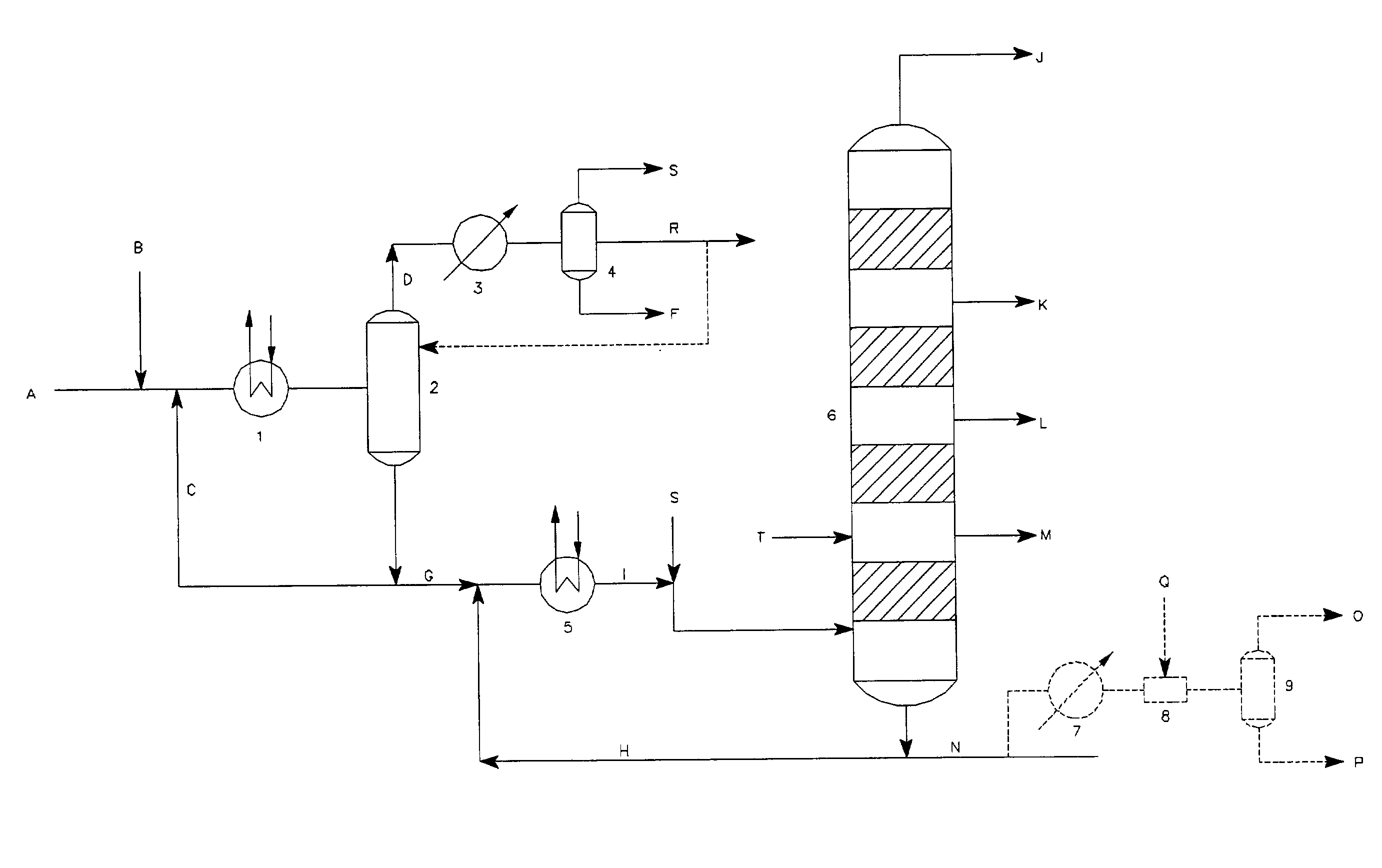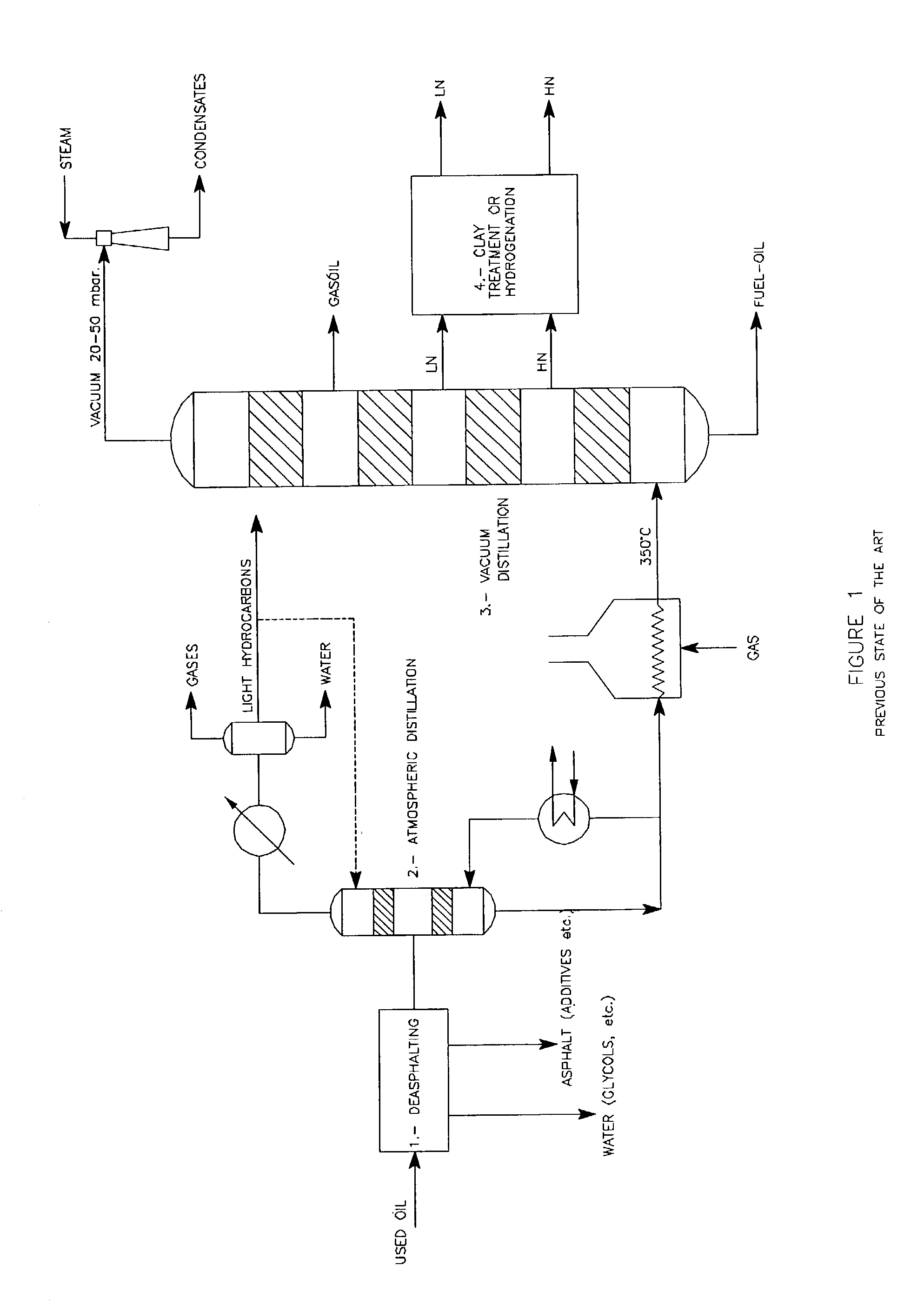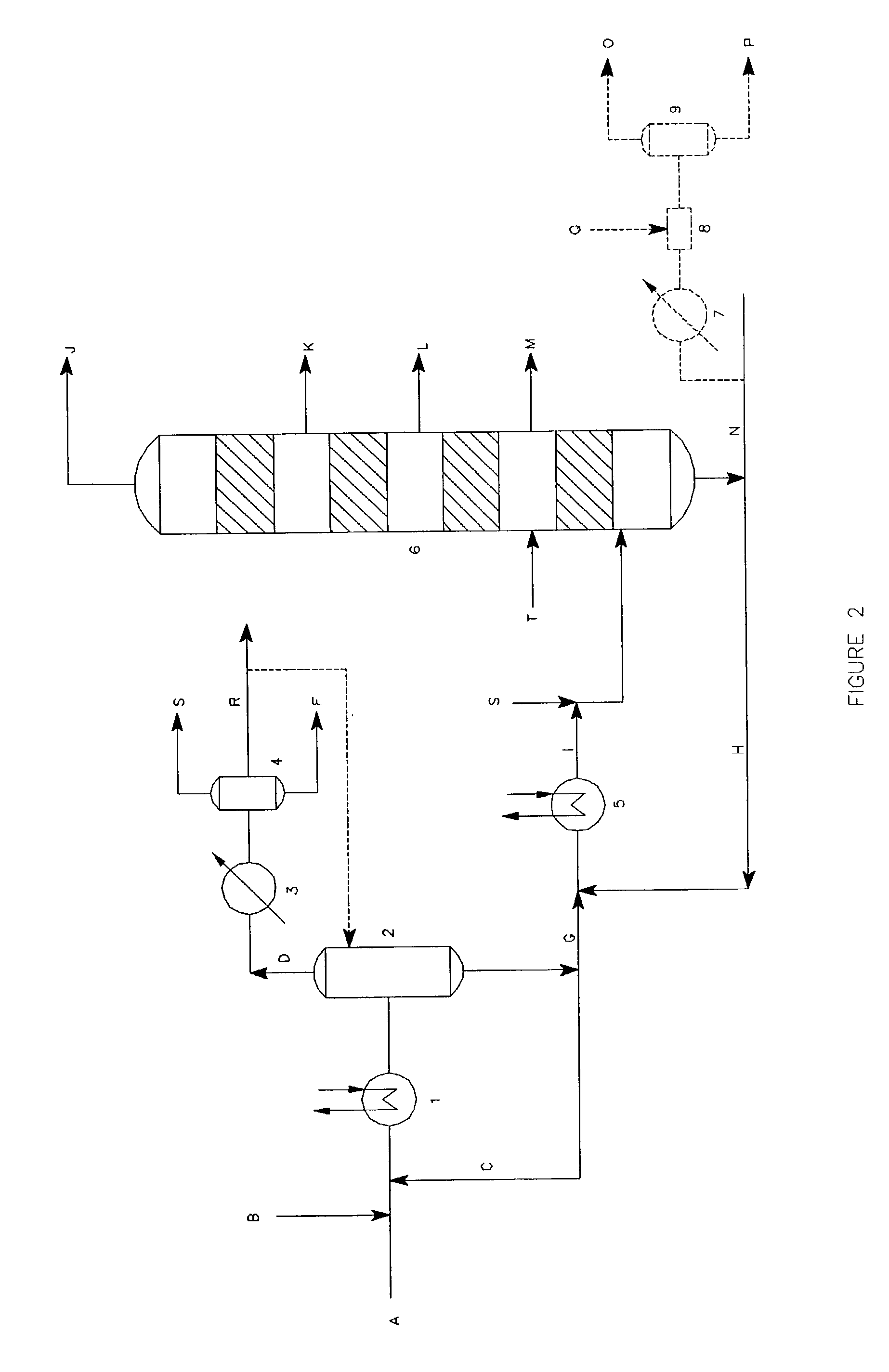Process for re-refining used oils by solvent extraction
a solvent extraction and re-refining technology, applied in the field of used oil re-refining, can solve the problems of sulphonated wastes difficult to manage, process almost abandoned, corrosion of heat exchange and distillation equipment, etc., and achieve the effect of not corroding the equipmen
- Summary
- Abstract
- Description
- Claims
- Application Information
AI Technical Summary
Benefits of technology
Problems solved by technology
Method used
Image
Examples
examples
Example no1
Process According to the State of the Art
[0052]As used oil, a product with the following characteristics was used:
[0053]
ColordarkFlashpoint C.O.C.165° C.Viscosity (ASTM D445) at 100° C.12.6 cstH2O (ASTM D95)4.5%Metals3500 ppmDistillation ASTM D 1160Initial point224.5Final point527.7Total Distilled (%)89.0
1000 kgs / h of this oil are extracted with 2500 kgs / h of liquid propane in a continuous system in accordance with the specifications of patent PCT US / 99 / 116600. The mixture is continually pumped to a phase separator. The propane solution from the upper phase leaves, by distillation of the propane, 890 kg / h of extract.
[0054]The lower aqueous and asphaltic phase is pumped to a vaporiser, obtaining, as distillate, 45 kgs / h of water with a high COD contents, that is sent to an effluent water treatment plant, and, 65 kgs / h of a bottom asphaltic product that includes the additives and other contaminants.
[0055]The extract is pumped at a rate of 890 kgs / h to an atmospheric distill...
PUM
 Login to View More
Login to View More Abstract
Description
Claims
Application Information
 Login to View More
Login to View More - R&D
- Intellectual Property
- Life Sciences
- Materials
- Tech Scout
- Unparalleled Data Quality
- Higher Quality Content
- 60% Fewer Hallucinations
Browse by: Latest US Patents, China's latest patents, Technical Efficacy Thesaurus, Application Domain, Technology Topic, Popular Technical Reports.
© 2025 PatSnap. All rights reserved.Legal|Privacy policy|Modern Slavery Act Transparency Statement|Sitemap|About US| Contact US: help@patsnap.com



